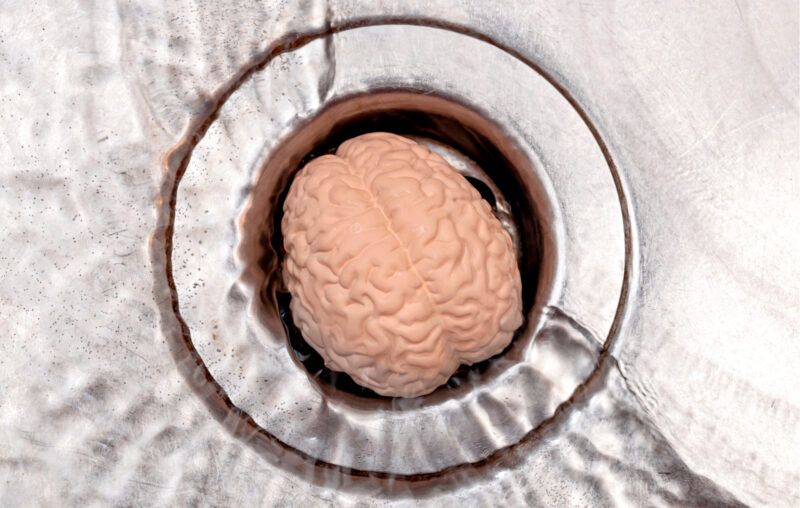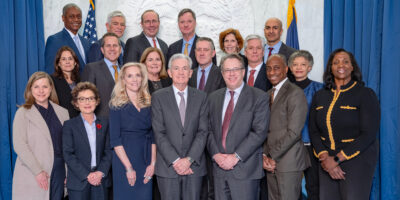Scapegoating Inflation Will Only Make It Worse

Inflation is officially no longer transitory. The Consumer Price Index has hit its highest rate in four decades, running at 7.5 percent year-over-year. The energy index rose 27 percent over the last year, and the food index increased 7 percent. The higher prices are affecting Americans with every purchase they make, and undercutting their wages. Inflation is even challenging Covid as voters’ number one issue of concern. And the President’s response? Deflection.
In an effort to skirt responsibility for the inflation he once said was both not happening and only transitory, President Biden and his Democratic supporters are crying “Collusion!” It’s “big poultry” or “big grocers” or “big oil” that have spontaneously colluded to raise prices on their consumers, motivated purely by greed. And like many policy proposals from the left these days, the Democrats have turned for a solution to a 20th-century relic—specifically, antitrust and price controls.
It’s true that four major companies dominate the meatpacking industry for beef, pork, and poultry, but don’t be fooled into thinking these companies are colluding with each other to raise prices. A much simpler answer than conspiracy and collusion can be found—all of the inputs to their product have risen in cost, from fertilizer and feed to gasoline and labor. When the cost of a product’s inputs increases, so too does the price of the final product.
On the fuel front, the increase in price can be explained by a mismatch of supply and demand. Demand plummeted during Covid lockdowns, supply was diminished, and now with demand for oil surging again worldwide, supply is slow to catch up. The administration’s signaling that it wants to phase out fossil fuels doesn’t encourage new investment in production either.
It’s worth noting that when the price of fuel rises, so does the price of just about everything else. Why is this? Because we are still an economy dependent on fossil fuels to power not only the transport of our goods but also the production of those goods.
Antitrust action to break up the large corporations that provide fuel and food will not lead to lower prices for consumers. These corporations are able to offer lower prices precisely because of their consolidation. As they consolidate and grow larger, they achieve economies of scale by lowering the average cost of each unit they produce. Likewise, increasing the regulatory oversight on corporations increases the cost of doing business, a cost that invariably gets passed on to consumers.
Similarly, price controls would be a devastating blow to consumers. When the price of a good is set artificially low, shortages follow. That’s because if a producer cannot make a decent return on their product, they’ll stop producing it. And why wouldn’t they? That’s not greed motivating their actions; that’s the bottom line. No producer is going to lose money on each unit sold and stay in business.
So if it isn’t corporate greed that’s driving inflation, what is?
Inflation has two primary culprits—supply disruptions and reckless monetary policy. Supply-side inflation is the result of bottlenecks slowing the delivery of goods and services. Demand-side inflation derives from expansionary monetary policy, pursued by the Federal Reserve.
An obvious but often unacknowledged contributor to our supply chain woes is the government’s response to the pandemic. When businesses were forced to close, supply was decimated. Many businesses never came back. A Federal Reserve study estimates that roughly 200,000 more businesses closed in the first year of the pandemic alone. That number is about one third higher than normal market exit. These closures obviously disrupted the equilibrium between supply and demand. Those who did hang on did so in part by selling off inventory and laying off workers. That means when demand surged once the more draconian government restrictions were lifted, supply had to play catch up.
And once employers were looking to restaff, they learned that, surprisingly, there were fewer people willing to work. There are currently 10.9 million job openings in the US with a labor participation rate of 62.2%. This labor shortage is driven, in part, by federal and state unemployment benefits, on top of other forms of transfer payments like the child tax credit, rental assistance, and direct payments from Presidents Trump and Biden. All of these subsidies create a disincentive to work.
Many who oppose the Biden administration often decry his multi-trillion-dollar spending bills. While it’s true that those government dollars are less productive than private dollars and rather than stimulate long-term economic growth, they simply boost short-term consumption, they aren’t what’s driving inflation. The type of persistent inflation we’re witnessing today is, as Milton Friedman famously said, “always and everywhere a monetary phenomenon.” Government subsidies and stimulus spending might goose demand — and when supply is limited that’s certainly a problem — but to thwart long-term inflation, we must turn our attention to the Fed’s monetary policy.
The Federal Reserve is charged with promoting maximum employment, stable prices, and moderate long term interest rates and uses monetary policy to achieve these ends. The Fed can boost employment, at least temporarily, by increasing the growth rate of money. It can reduce inflation by reducing the growth rate of money. To ensure that long term interest rates are not too high, it must prevent money growth from outpacing money demand by too wide a margin on average over time.
It’s a careful line to walk for the Fed. Over the last few months, supply constraints and a rise in nominal spending has left too many dollars chasing too few goods. For context, the money supply has increased by an eyewatering 40 percent over the past two years as a result of the Fed’s expansionary monetary policy. High inflation is the natural consequence.
The Fed could bring down inflation by cutting the growth rate of money. It can accomplish this by raising the interest it pays banks on reserve balances or drastically reducing the size of its balance sheet to hit a higher federal funds rate target. But politicians are concerned the Fed will take away the “punch bowl” (so to speak) too rapidly, thus slowing economic growth and triggering a recession. This is certainly possible. And it’s what we saw with Paul Volcker’s scrupulous Fed in the 1980s. The short-term downturn hurt, no doubt, but inflation was thwarted and economic growth rebounded.
One could argue, however, that the growth the Fed’s expansionary monetary policies are promoting now is inequitable and further widens the divide between the top and bottom earners in this country. That’s because the Fed’s asset purchases pump up the stock market at the expense of low-income savers who do not invest in the stock market.
When interest rates are near zero, putting money into a savings account yields virtually no return, incentivizing investment in the stock market. That’s part of the reason corporations have seen such large gains in their value over the course of the pandemic. It’s government action distorting the market, not corporate collusion, that is leading to the wealth creation so many Democrats decry. The President might not be willing to acknowledge this economic reality for political reasons, but even Federal Reserve Chair Jerome Powell does, indicating the economy no longer needs stimulus and that the Fed should therefore begin to taper its asset purchases and raise interest rates to slow inflation.
And because inflation eats away at workers’ wages by making every item they buy with those wages more expensive, reining in this monetary policy would reduce inflation and benefit, not harm, the poorest among us.
Are the threat of antitrust action and the flirtation with price controls cheap throwaway lines recycled from the 20th century meant solely to get the administration through the next news cycle? Or are they serious proposals emerging from the increasingly radical progressive flank of the Democratic Party? For the sake of the economy and your grocery bills, let’s hope it’s the former. If the administration really wants to tackle inflation, it needs the Fed to rein in its reckless monetary policy.










